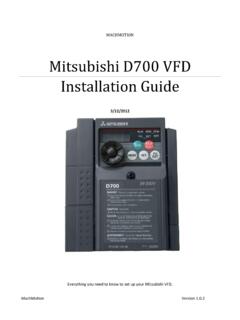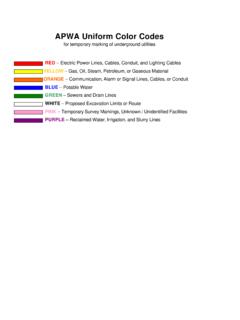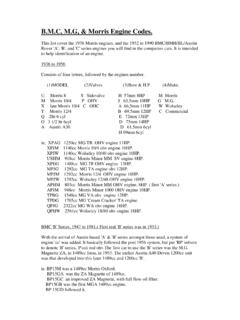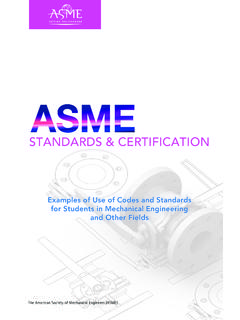Transcription of REFERENCE MANUAL - MachMotion
1 G & M Code REFERENCE MANUAL . Specializing in CNC Automation and Motion Control 2|Page 11/8/16 R0163. This MANUAL covers definition and use of G & M codes. Formatting Overview: Menus, options, icons, fields, and text boxes on the screen will be bold ( the Help icon). Clickable buttons will be bold and within brackets ( the [OK] button). Directory names, commands, and examples of editing program files will appear in Courier New font This MANUAL as well as all other MachMotion manuals can be found at Copyright 2016, MachMotion All rights reserved. G & M Code Page |3. G & M Code R0163. Table of Contents 1 INTRODUCTION .. 4. 5. Format .. 7. G Code List .. 8. G Code Descriptions and Examples .. 10. 2 CANNED CYCLES .. 37. Drilling .. 39. Tapping .. 43. Boring .. 45. 3 CUTTER COMPENSATION .. 52. 4 M CODE 56. M Code Descriptions .. 57. G & M Code 4|Page 1 INTRODUCTION. G Code is a special programming language that is interpreted by Computer Numerical Control (CNC).
2 Machines to create motion and other tasks. It is a language that can be quite complex at times and can vary from machine to machine. The basics, however, are much simpler than it first appears and for the most part follows an industry adopted standard. Mach4 has made a large leap closer to this standard. An important point to remember when reading this MANUAL : In describing motion of a machine it will always be described as tool movement relative to the work piece. In many machines the work piece will move in more axes than the tool; however the program will always define tool movement around the work piece. Axes directions follow the right hand rule, see figure 1. Figure A: Right hand rule FIGURE 1 RIGHT HAND RULE. G & M Code Page |5. Glossary Block A single line of G Code Canned Cycle Complex cycle defined by a single block of code Dwell Program pause with a duration defined by P in seconds EOB End of block.
3 Required at the end of every block of G Code. In Mach4 this is a carriage return Feed rate Velocity, set by F, at which an axis will move Group Collection of G codes that control the same function or mode, G90 and G91. positioning modes Modal Active until a code from the same group is called Normal A line perpendicular to a plane, pointing in the positive direction. Origin Point in a coordinate system where X, Y and Z are zero RPM Revolutions per minute UPM Units per minute (inches, millimeters, degrees, etc). Word A single word of G Code is a letter followed by a number. G01, , etc. are words TABLE 1. G & M Code 6|Page G Preparatory function, G followed by a numerical code, specifies machining modes and functions M Miscellaneous function, M followed by a numerical code, defines program flow and can control auxiliary functions such as coolant. Can also perform machine specific functions and macros user or builder.
4 X, Y, Z, A, B, C Movement commands followed by a numerical value, define the end point of a motion command S Spindle speed, followed by numerical value of desired rpm or surface speed T Tool call, followed by next tool number to be used H Tool height offset to be used, generally matches the tool number D Tool diameter offset to be used, generally matches the tool number F Followed by a numerical value to define the feed rate. The magnitude and value of which will be determined by the feed mode setting P Followed by a numerical value, specifies dwell time in seconds. (also used in other functions). N Sequence numbers. Used for program organization and go to commands TABLE 2. G & M Code Page |7. Format In writing G Code programs there are some rules to be aware of as well as some general formatting guidelines that should be followed or at least considered. The first part of any program should be a safe start up block.
5 This line of code is used to make sure that some modes are disabled and others are set to their most common setting. An example safe start block would look like this: G00 G90 G17 G54 G40 G49 G80. This block of code tells the machine that we want to be in rapid mode and using absolute position in the XY plane of fixture offset 1. At the same time we want to cancel any tool diameter and length offsets and make sure any active canned cycles are cancelled. G00 Rapid mode G90 Absolute position mode G17 XY plane select G54 Fixture offset 1. G40 Cutter compensation (tool diameter) cancel G49 Length offset cancel G80 Canned cycle cancel It is recommended that this safe start block be used at the start of the program and also before or immediately following every tool change. It is common to restart a program from a tool change, having the safe start line there can greatly reduce the chance of a machine not acting as expected, the results of which can be aggravating at best and a crash at worst.
6 The safe start block shown here is just an example. Every machine and every programmer are a little different and each will have their own start up block. Jumping to the end of the program there is not a lot required. Typically there will be a couple blocks of code to return the Z axis to the home position and maybe move the work piece closer to the operator for easier loading and unloading of parts. Shutting off the spindle and coolant or any other accessories is also a good idea here. The final block in a program is a program end code, most commonly M30 but there are other options. Make sure this final block is followed by an end of block. It is easy to forget this last EOB in a program for Mach because it is just a carriage return and not always readily apparent. One way to make sure that there is always an EOB on your program end block is to follow it with %.
7 Like this: M30. %. This percent sign is a familiar symbol to CNC programmers in industry; however any symbol or character can be used as it will not be read by the control because of the program end before it. If there is no EOB following the percent sign it will not show up in the program when loaded into Mach. In between the start and end is the body of the program. There are a few rules here. Each block of code will contain a combination of words. Multiple G codes can be specified in a single block, however if more than one from the same modal group is specified the last one in the block will be valid, with the exception of group 00. Modal G codes stay active until another from the same group is G & M Code 8|Page called. For example; G01 is modal so it is not necessary to put it in consecutive blocks. Once active every successive positioning block will be in the G1 mode unless another code from group one is called (G00, G02, G03, etc.)
8 All G codes not in group 0 behave this way. Only one M code can be specified in a single block. Same holds true for all other words. Generally leading zeroes are not required in G Code. For example G01 and G1 are the same. The same holds true for M codes, position commands, feed rates, etc. When specifying values for position, feed rate, variables, etc., it is good practice to always use a decimal point and trailing zero, instead of X1 use Although the decimal point is not required (in Mach X1 = ) it is HIGHLY. recommended. G Code List Code Group Description Modal Page G00 1 Rapid Move Y 10. G01 1 Linear Feed Move Y 10. G02 1 Clockwise Arc Feed Move Y 11. G03 1 Counter Clockwise Arc Feed Move Y 11. G04 0 Dwell N 14. G09 0 Exact stop N 14. G10 0 Fixture and Tool Offset Setting N 15. G12 1 Clockwise Circle Y 18. G13 1 Counter Clockwise Circle Y 18. G15 11 Polar Coordinate Cancel Y 18.
9 G16 11 Polar Coordinate Y 18. G17 2 XY Plane Select Y 20. G18 2 ZX Plane Select Y 20. G19 2 YZ Plane Select Y 20. G20 6 Inch Y 20. G21 6 Millimeter Y 20. G28 0 Zero Return N 21. G30 0 2nd, 3rd, 4thZero Return N 22. G31 1 Probe function N 22. G32 1 Threading* N 23. G40 7 Cutter Compensation Cancel Y 23. G41 7 Cutter Compensation Left Y 25. G42 7 Cutter Compensation Right Y 25. G43 8 Tool Length Offset + Enable Y 25. G44 8 Tool Length Offset - Enable Y 25. G49 8 Tool Length Offset Cancel Y 25. G50 9 Cancel Scaling Y 25. G51 9 Scale Axes Y 25. G52 0 Local Coordinate System Shift Y 26. G & M Code Page |9. G53 0 Machine Coordinate System N 27. G54 12 Fixture Offset 1 Y 28. 12 Additional Fixture Offsets Y 28. G55 12 Fixture Offset 2 Y 28. G56 12 Fixture Offset 3 Y 28. G57 12 Fixture Offset 4 Y 28. G58 12 Fixture Offset 5 Y 28. G59 12 Fixture Offset 6 Y 28. G60 0 Unidirectional Approach N 28.
10 G61 13 Exact Stop Mode Y 28. G64 13 Cutting Mode (Constant Velocity) Y 29. G65 0 Macro Call N 29. G66 Macro Modal Call Y 30. G67 Macro Modal Call Cancel Y 30. G68 15 Coordinate System Rotation Y 29. G69 15 Coordinate System Rotation Cancel Y 31. G73 16 High Speed Peck Drilling Y 42. G74 16 LH Tapping* Y 44. G76 16 Fine Boring* Y 45. G80 16 Canned Cycle Cancel Y 38. G81 16 Hole Drilling Y 39. G82 16 Spot Face Y 40. G83 16 Deep Hole Peck Drilling Y 41. G84 16 RH Tapping* Y 43. 16 RH Rigid Tapping* Y 45. 16 LH Rigid Tapping* Y 45. G85 16 Boring, Retract at Feed, Spindle On Y 46. G86 16 Boring, Retract at Rapid, Spindle Off Y 47. G87 16 Back Boring* Y 48. G88 16 Boring, MANUAL Retract Y 50. Boring, Dwell, Retract at Feed, Spindle G89 16 Y 51. On G90 3 Absolute Position Mode Y 32. 4 Arc Center Absolute Mode Y 33. G91 3 Incremental Position Mode Y 32. 4 Arc Center Incremental Mode Y 33.





